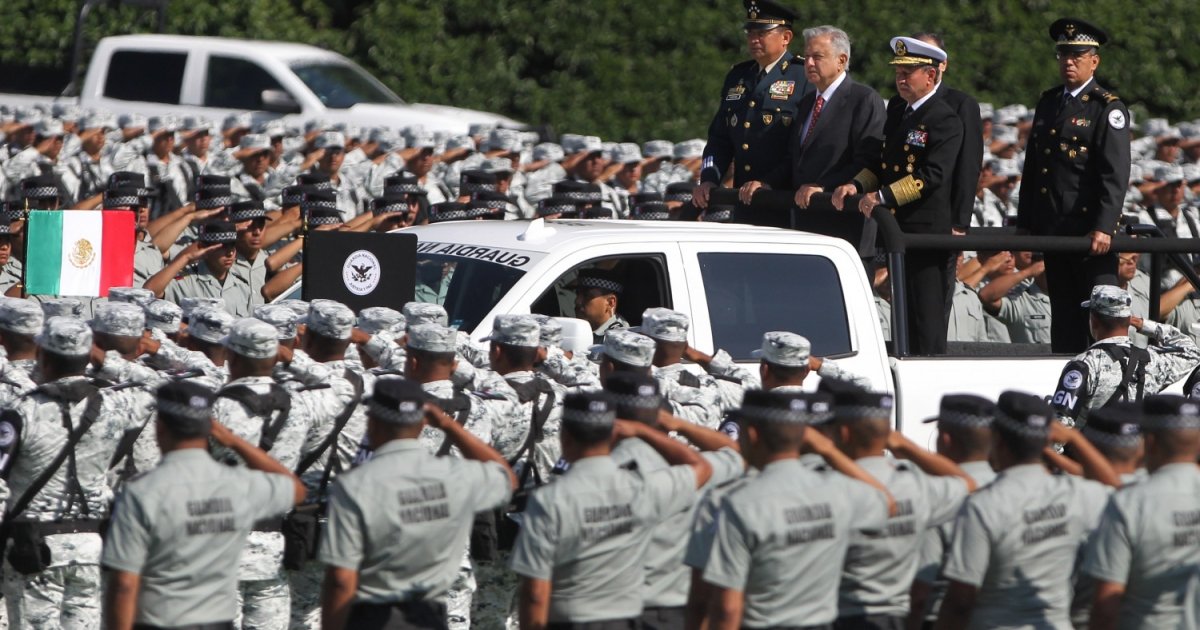Back to Basics on Mexico’s Public Security
Back to Basics on Mexico's Public Security Wilson Center


Mexico’s National Election and the Need for Improved Public Security

The forthcoming national election in Mexico provides a valuable opportunity to reassess the broader perspective of public security in the country. Analysis of crime incidence data reveals that the policies and actions implemented by the previous three administrations—Calderón, Peña Nieto, and López Obrador—have not been successful in significantly reducing most crime and violence indicators.
To enhance public security in Mexico, it is crucial to understand the shortcomings of previous security policies. A good starting point is to question the fundamental assumptions underlying the actions of different administrations.
Calderón Administration: Relative Coercive Power
The Calderón administration operated under the assumption that “winning the war” against crime relied on relative coercive power. This implied that a sufficiently powerful and well-designed intervention by state forces would diminish criminal organizations’ activities. However, this approach proved ineffective. Other factors, such as the inelastic demand for drugs and corruption among public officials, had a more significant impact.
Peña Nieto Administration: Reactive Use of Force
The Peña Nieto administration did not explicitly outline its approach to combating crime. It appeared to be a milder version of Calderón’s policy, characterized by a more reactive use of public force with less initiative. Unfortunately, the results were no better.
AMLO Government: Economic Necessity
The AMLO government altered the core premise, at least in its discourse. It believed that individuals, particularly young people, engaged in criminal activities and joined criminal organizations due to economic necessity. Consequently, large sums of unconditional cash were transferred to discourage criminal behavior, accompanied by a more passive role for state forces, primarily the military, which assumed control of security. However, security conditions did not improve. Contrary to the AMLO administration’s assumption, these transfers served as a complement to other income sources, including proceeds from criminal activities, rather than a substitute. Moreover, there is no solid evidence supporting the assumption that necessity has a linear relationship with the likelihood of committing a crime. Reducing the use of force by the state also failed to reduce criminal violence, as most of it stems from confrontations among criminal organizations in which the state merely observes.
While the above paragraphs provide a simplified overview, they offer valuable insights into how not to approach Mexico’s security challenges. The security policy of the new administration, whether led by Claudia Sheinbaum or Xóchitl Gálvez, should learn from past failures and pose the right questions when designing policy interventions.
Key Questions for Designing Effective Security Policy
To effectively reduce crime and violence, increasing the state’s coercive power is necessary but insufficient. It is essential to think beyond what previous administrations have implemented. Here are two key questions that should guide the design of the new administration’s security policy:
1. Turning the Public Security Problem into a Manageable Issue
Given the overwhelming scale and complexity of Mexico’s public security problem, it is evident that state organizations are overwhelmed. When confronted with such a significant challenge, it is useful to consider strategies for reducing the problem’s magnitude before exploring potential solutions. One approach worth considering is the legalization of drugs to minimize black markets and the associated conflicts. While this measure alone will not solve the problem, it will free up substantial budgetary and human resources to combat “easier” crimes and reduce corruption incentives. Legalization is undoubtedly a complex issue, but it is essential to initiate discussions and take action.
2. Reducing the Lethality of Criminal Organizations’ Confrontations
In most countries, criminal organizations exist, and conflicts among them are inevitable. However, not all confrontations result in the same level of lethality. The variance is closely linked to the types of weapons utilized by these organizations during confrontations. Addressing the issue of illegal arms trafficking from the United States is crucial. The current administration has taken a significant step by explicitly including this topic on the agenda and implementing measures. It should now prioritize further action.
Overall, it is imperative that new policies and actions are evidence-based. There is already a substantial body of knowledge on this matter that should inform decision-making.
SDGs, Targets, and Indicators
-
SDG 16: Peace, Justice, and Strong Institutions
- Target 16.1: Significantly reduce all forms of violence and related death rates everywhere
- Target 16.3: Promote the rule of law at the national and international levels and ensure equal access to justice for all
- Target 16.4: By 2030, significantly reduce illicit financial and arms flows, strengthen the recovery and return of stolen assets, and combat all forms of organized crime
- Target 16.5: Substantially reduce corruption and bribery in all their forms
-
SDG 3: Good Health and Well-being
- Target 3.5: Strengthen the prevention and treatment of substance abuse, including narcotic drug abuse and harmful use of alcohol
Analysis
The article discusses the issues of public security, crime, violence, and corruption in Mexico. Based on this content, the following SDGs, targets, and indicators can be identified:
1. SDG 16: Peace, Justice, and Strong Institutions
- Target 16.1: The article highlights that the policies and actions of previous administrations have not significantly reduced crime and violence indicators in Mexico.
- Target 16.3: The article mentions corruption by public officials as a variable that has a greater effect on crime and violence. This indicates a need to promote the rule of law and ensure equal access to justice.
- Target 16.4: The article suggests that reducing illicit arms flows, such as illegal arms trafficking from the United States, is crucial in reducing the lethality of criminal organizations’ confrontations.
- Target 16.5: The article emphasizes the importance of reducing corruption and bribery, which are factors contributing to the security problems in Mexico.
2. SDG 3: Good Health and Well-being
- Target 3.5: The article briefly mentions the need to strengthen the prevention and treatment of substance abuse, including narcotic drug abuse, which is relevant to addressing the security issues related to drug trafficking and criminal activities.
Table: SDGs, Targets, and Indicators
| SDGs | Targets | Indicators |
|---|---|---|
| SDG 16: Peace, Justice, and Strong Institutions | Target 16.1: Significantly reduce all forms of violence and related death rates everywhere | The policies and actions of previous administrations have not significantly reduced crime and violence indicators in Mexico. |
| SDG 16: Peace, Justice, and Strong Institutions | Target 16.3: Promote the rule of law at the national and international levels and ensure equal access to justice for all | Corruption by public officials has a greater effect on crime and violence. |
| Target 16.4: By 2030, significantly reduce illicit financial and arms flows, strengthen the recovery and return of stolen assets, and combat all forms of organized crime | Reducing illicit arms flows, such as illegal arms trafficking from the United States, is crucial in reducing the lethality of criminal organizations’ confrontations. | |
| Target 16.5: Substantially reduce corruption and bribery in all their forms | Reducing corruption and bribery is important in addressing the security problems in Mexico. | |
| SDG 3: Good Health and Well-being | Target 3.5: Strengthen the prevention and treatment of substance abuse, including narcotic drug abuse and harmful use of alcohol | The need to strengthen the prevention and treatment of substance abuse is relevant to addressing security issues related to drug trafficking and criminal activities. |
Copyright: Dive into this article, curated with care by SDG Investors Inc. Our advanced AI technology searches through vast amounts of data to spotlight how we are all moving forward with the Sustainable Development Goals. While we own the rights to this content, we invite you to share it to help spread knowledge and spark action on the SDGs.
Fuente: wilsoncenter.org

Join us, as fellow seekers of change, on a transformative journey at https://sdgtalks.ai/welcome, where you can become a member and actively contribute to shaping a brighter future.







